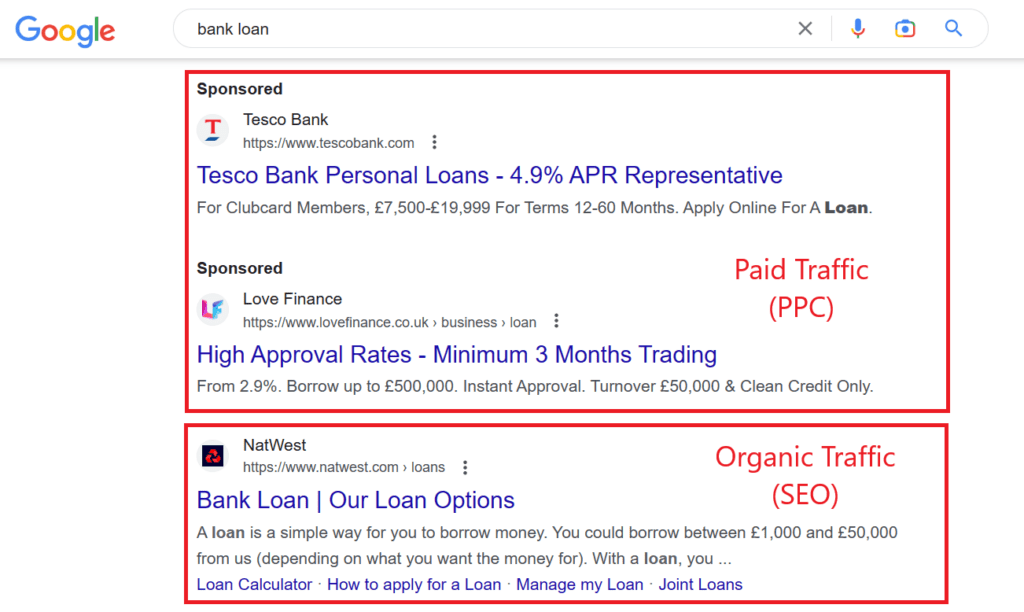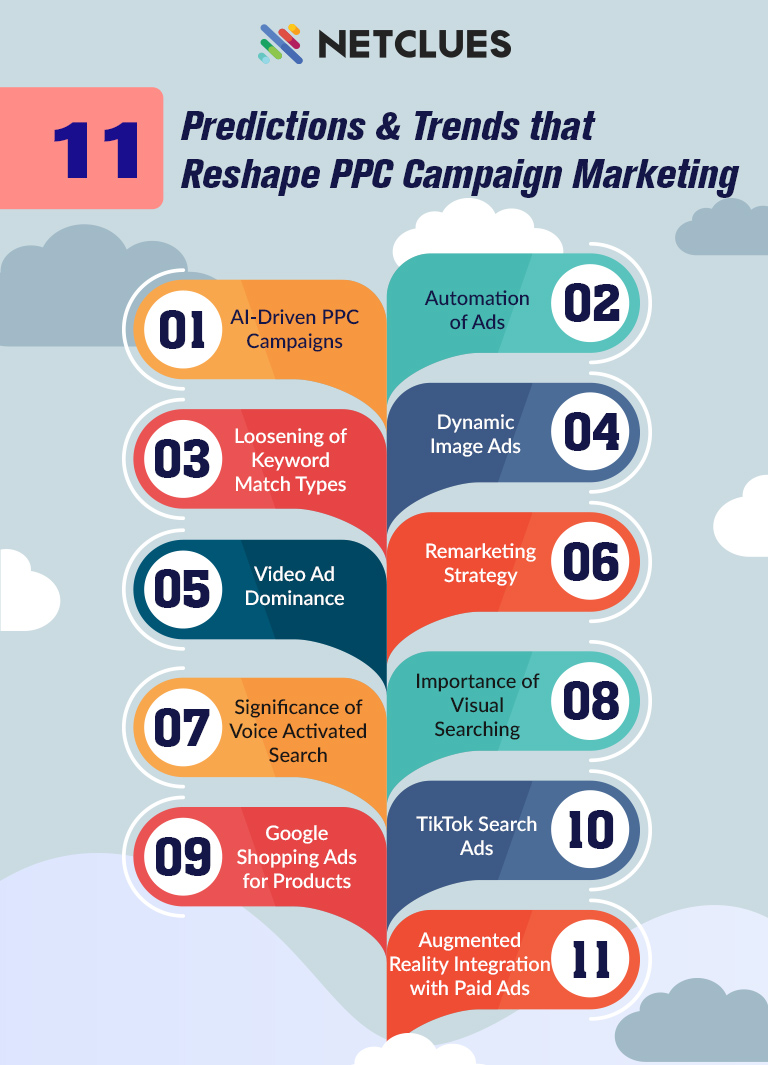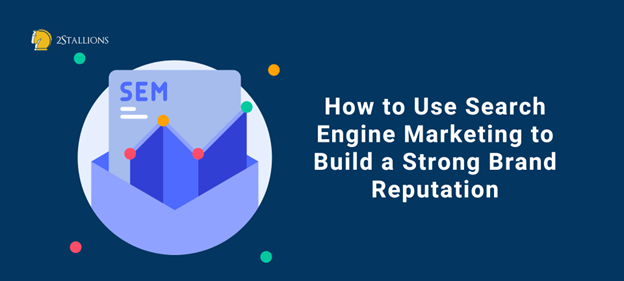SHARE

Banks increasingly turn to Search Engine Marketing (SEM) strategies to maximise their return on investment (ROI) in today’s fast-paced digital landscape. Understanding the importance of SEM for banks is crucial in building a strong online presence and attracting potential customers. This article will explore the role of SEM in the banking sector, how it impacts a bank’s digital presence, key strategies for effective SEM, measuring and maximising ROI, and future trends in SEM for banks.
(Source: Nuoptima)
Understanding the Importance of SEM for Banks
The role of search engine marketing in the banking sector cannot be understated. With most consumers conducting online research before making financial decisions, banks must ensure they are visible and easily discoverable on search engine results pages (SERPs). SEM encompasses a range of tactics designed to increase a bank’s visibility on search engines, including paid advertisements, keyword research, and ad copy optimisation.
The Role of Search Engine Marketing in the Banking Sector
The banking sector is highly competitive, with numerous financial institutions vying for customers’ attention. SEM allows banks to target specific keywords and phrases related to their services, ensuring they appear prominently when potential customers search for relevant terms. By appearing at the top of SERPs, banks can increase their chances of attracting quality leads, generating website traffic, and increasing conversions.
How SEM Impacts a Bank’s Digital Presence
A strong digital presence is essential for modern banks. SEM plays a vital role in enhancing a bank’s visibility online by driving targeted traffic to its website. By implementing SEM strategies, banks can reach potential customers at the right moment when they are actively searching for financial products or services. This targeted approach increases the likelihood of converting leads into customers and helps establish the bank as a trusted authority in the industry.
Furthermore, search engine marketing allows banks to stay ahead of the competition in the ever-evolving digital landscape. With new technologies and platforms emerging constantly, banks need to adapt their marketing strategies to remain relevant. Banks can keep up with the latest trends by investing in SEM and ensuring their strong online presence.
Moreover, SEM provides banks with valuable insights into consumer behaviour and preferences. Through keyword research and analysis, banks can better understand what potential customers are searching for and tailor their marketing efforts accordingly. This data-driven approach enables banks to create targeted campaigns that resonate with their target audience, increasing the effectiveness of their marketing efforts.
(Source: Digi Convo)
Key SEM Strategies for Banks
To create effective SEM campaigns, banks must utilise keyword research, craft compelling ad copy, and optimise landing pages for higher conversions.
Utilising Keyword Research for Effective SEM
Keyword research is the foundation of successful SEM campaigns. Banks must identify high-value keywords and phrases that potential customers will likely search for when looking for financial services. Banks can gain insights into search volume, competition, and relevance by leveraging tools such as Google Keyword Planner. This enables them to target specific keywords that align with their offerings and have the potential to attract qualified leads.
The Power of Ad Copy in Banking SEM
Ad copy plays a crucial role in attracting clicks and driving conversions. Banks must create concise, compelling, and highly relevant ad copy that resonates with their target audience. By highlighting unique selling points, offering solutions to customer pain points, and using persuasive language, banks can increase click-through rates and encourage users to take desired actions, such as filling out a form or contacting the bank directly.
Landing Page Optimisation for Higher Conversions
Once potential customers click on a bank’s ad, the landing page they arrive on must be optimised for higher conversions. Banks should ensure their landing pages are user-friendly, visually appealing, and provide relevant and valuable information. Clear calls-to-action and streamlined forms can help improve conversion rates, allowing banks to capture leads effectively and move them further along the customer journey.
In addition to these key strategies, banks should continuously monitor and analyse the performance of their SEM campaigns. By regularly reviewing metrics such as click-through rates, conversion rates, and cost per click, banks can identify areas for improvement and make data-driven decisions to optimise their campaigns further.
Furthermore, banks can also consider implementing remarketing campaigns as part of their SEM strategy. Remarketing allows banks to target users who have previously visited their websites or engaged with their ads. By serving tailored ads to these users, banks can increase brand recall and encourage them to revisit the website or take the desired action, such as completing a loan application or opening a new account.
Lastly, the importance of staying up-to-date with the latest trends and developments in the SEM landscape is worth mentioning. As technology and consumer behaviour evolve, banks must adapt their SEM strategies accordingly. Keeping an eye on emerging trends, such as voice search or mobile advertising, can give banks a competitive edge and help them stay ahead in digital marketing.
(Source: LinkedIn)
Measuring and Maximising ROI in SEM
Measuring the effectiveness of SEM campaigns is crucial to maximising ROI. Banks must set up tracking mechanisms to gather data on key metrics, such as impressions, clicks, conversions, and cost-per-click. By analysing and interpreting this data, banks can identify underperforming campaigns, make data-driven optimisations, and reallocate budgets to channels that yield the best results. Regular monitoring and fine-tuning of SEM campaigns are essential to continually improving ROI.
Setting Up Tracking for SEM Campaigns
Banks must set up tracking mechanisms such as conversion tracking and tagging URLs to accurately measure ROI. Conversion tracking allows banks to track specific actions users take on their website, such as completing an application or making a purchase. Tagging URLs helps banks identify the traffic source and understand which ad campaigns drive the most conversions. By leveraging these tracking tools, banks can gain valuable insights into the effectiveness of their SEM efforts.
Analysing and Interpreting SEM Data
Making sense of the data collected from SEM campaigns is vital in optimising performance. Banks should analyse metrics such as click-through rates, conversion rates, and cost-per-click to identify areas for improvement. A deep dive into the data can reveal trends, patterns, and opportunities to refine targeting, adjust bidding strategies, or create more compelling ad copy. This data-driven approach can help banks achieve higher ROI by continuously optimising their SEM campaigns.
Strategies for Improving ROI in SEM
Improving ROI in SEM requires a strategic approach. Banks can experiment with different ad formats, adjust bidding strategies based on performance data, and explore retargeting campaigns to reach prospects who have shown interest but have not converted. Banks can continually test and refine their SEM strategies to improve their return on investment and achieve their marketing objectives.
Moreover, banks need to stay updated with the latest industry trends and developments in the SEM landscape. The digital marketing landscape constantly evolves, with new technologies and platforms emerging regularly. By staying informed about these changes, banks can adapt their SEM strategies to stay ahead of the competition and maximise their ROI.
Banks can also consider leveraging the power of social media platforms to complement their SEM efforts. Social media platforms offer a unique opportunity to engage with customers and build brand awareness. By integrating SEM campaigns with social media marketing, banks can create a cohesive and impactful digital marketing strategy that drives higher ROI.
(Source: Netclues)
Future Trends in SEM for Banks
As technology evolves, SEM for banks is likely to be shaped by two major trends: the rise of voice search and the increasing role of artificial intelligence (AI) in marketing strategies.
The Rise of Voice Search and Its Impact on SEM
Voice search is growing rapidly, with devices like smartphones and smart speakers becoming ubiquitous. Banks must adapt their SEM strategies to account for this shift in consumer behaviour. Optimising for voice search involves tailoring keywords and ad copy to match conversational queries and providing concise, accurate information that directly answers users’ questions. Banks that embrace voice search will be well-positioned to reach potential customers and stay ahead of the competition.
How AI is Shaping SEM Strategies for Banks
Artificial intelligence is revolutionising the way banks approach SEM. AI-powered tools and algorithms can analyse vast amounts of data, identify patterns, and make real-time adjustments to SEM campaigns. This allows banks to automate bid management, personalise ad targeting, and predict customer behaviour more accurately. By harnessing the power of AI, banks can enhance their SEM strategies, improve ROI, and deliver highly relevant and personalised experiences to their target audience.
The Role of Mobile in Future SEM Strategies
Mobile devices dominate consumers’ lives, and banks must ensure their SEM strategies are mobile-friendly. Mobile SEM involves:
- Optimising landing pages for smaller screens.
- Creating mobile-specific ads.
- Leveraging location-based targeting to reach users when they are near a physical branch.
Mobile-specific ad extensions, such as click-to-call buttons, can also drive immediate actions and support the customer journey. Banks prioritising mobile in their SEM strategies will be well-positioned to connect with customers in an increasingly mobile-first world.
In conclusion, maximising ROI through effective SEM strategies is crucial for banks in today’s digital era. By understanding the importance of SEM, implementing key strategies such as keyword research and ad copy optimisation, and measuring and maximising ROI through data analysis, banks can drive targeted traffic, increase conversions, and establish a solid online presence. Furthermore, banks can continue to adapt and thrive in the evolving landscape of search engine marketing by staying ahead of future trends such as voice search and AI.
Frequently Asked Questions About SEM Strategies for Banks
What Are Effective SEM Strategies For Banks To Maximise ROI?
Effective strategies include using targeted keyword research to reach potential customers, optimising landing pages to improve conversion rates, and utilising remarketing techniques to re-engage visitors.
How Can Banks Use Targeted Advertising in SEM?
Banks can use targeted advertising by analysing customer data to create detailed personas, using geographic targeting to reach local customers, and employing demographic targeting to appeal to specific age groups or financial needs.
What Role Does Analytics Play in SEM For Banks?
Analytics play a crucial role in SEM for banks by providing insights into campaign performance, helping to refine strategies, track conversions, and identify areas for improvement to ensure the highest possible ROI.
How Can Banks Optimise Their SEM landing Pages?
Banks can optimise their SEM landing pages by ensuring they are user-friendly, fast-loading, and mobile-optimised, with clear calls to action, concise messaging, and trust signals such as security certifications and customer testimonials.



![10 ways to make your PPC ads stand out [with examples]](https://media.licdn.com/dms/image/C5112AQFn2O8Nf1huXg/article-cover_image-shrink_600_2000/0/1520224017524?e=2147483647&v=beta&t=XjHyfAGni8JJ5GJ-7RqCcnndvXzC3Eluc3Tk_0pC4z4)












